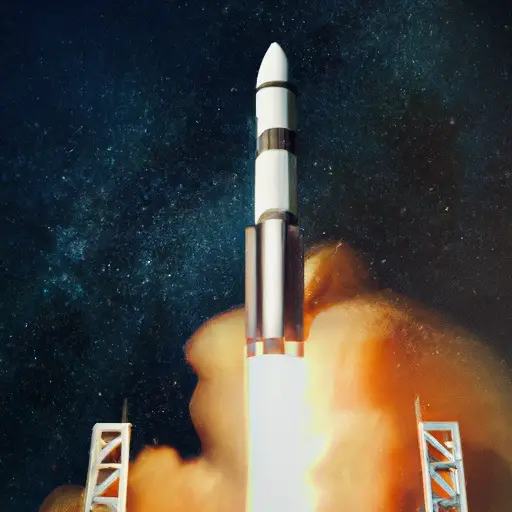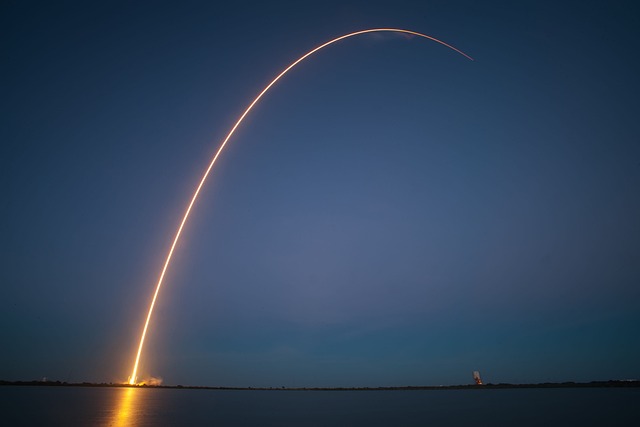
Space Launch
Space launches are an essential part of our modern world, providing the means for everything from scientific exploration to communications and entertainment.
At the heart of this process is the complex and highly specialized field of space launch schedule, which involves considering a wide range of factors in order to determine the best time and location for a launch.
Whether you are an engineer, scientist, or space enthusiast, understanding the process of space launch is essential for anyone involved in the world of space exploration. This informative article will provide you with the information you need to understand and appreciate space launches.
What is a space launch?
A space launch is a process of sending a spacecraft or satellite into outer space. During this process, a rocket or other type of propulsion system is used to lift a spacecraft or satellite off the ground, and then propel it into outer space.
Design considerations for a space launch system
There are several considerations that are typically taken into account when designing a space launch system. One of the most important is payload capacity, which refers to how much weight a rocket or other type of space vehicle can transport into outer space.
Another important consideration is the type of fuel used to propel the spacecraft or satellite, as well as how much fuel is required for a successful space launch.
What factors affect the success of a space launch?
There are numerous factors that affect the success of a space launch, such as weather conditions, the quality and reliability of components, and the overall design of a space vehicle.
Once a spacecraft or satellite has been successfully launched into outer space, it is typically left in orbit around Earth. However, some spacecraft or satellites may also be directed toward other planets or moons in space.
Overall, the process of sending a spacecraft or satellite into outer space is an exciting and complex endeavor that requires careful planning, a collaboration between multiple parties, and technical expertise.
While there is always a certain degree of risk involved, the benefits that can be gained from space exploration are invaluable to humankind.
What are the primary space launch sites in the united states?
The primary space launch sites in the United States can be found at a variety of different locations across the country, including both land and sea.
Some of the most notable sites include
- Cape Canaveral in Florida,
- Vandenberg Air Force Base in California,
- Wallops Island in Virginia, and
- Pacific Spaceport Complex formerly Kodiak Launch Complex in Alaska.
Each of these sites has its own advantages and disadvantages with regard to launching payloads into space, including factors such as proximity to the equator, security level, and weather conditions.
Overall, these sites offer unparalleled capabilities for reaching space from the United States, making them the most important space launch sites in the country.
Cape Canaveral is perhaps one of the best-known and most utilized space launch sites in the United States, located on a barrier island off the coast of Florida.
This site has been used extensively for space launches since the early days of the space program and is still in active use today. It has a long runway that can handle large payloads, as well as advanced tracking and communications facilities to ensure that each launch goes smoothly.
Vandenberg Air Force Base in California is another prominent space launch site in the United States. This site has traditionally been used for sending satellites into polar orbits, but can also be used for launches heading towards other directions as well.
Additionally, this site is home to several launch ranges and associated tracking facilities that can provide support for a wide range of missions.
Wallops Island in Virginia is also an important site for space launches in the United States and has been used to send payloads into orbit from both land and sea.
This site is located on a barrier island on the eastern seaboard and was originally founded as an antisubmarine range in World War II. Since that time, it has been involved in a number of key space launches, including the launch of the first private spacecraft.
Pacific Spaceport Complex formerly Kodiak Launch Complex in Alaska is another important space launch site for the United States. This site was originally established as a defense facility but has since been converted to support space launches as well.
It is located on Kodiak Island in the Gulf of Alaska and includes two launch pads that are designed to handle a variety of different payloads. This site also has extensive tracking facilities as well, making it an important asset for space launch missions from the United States.
Overall, these are just a few of the most important space launch sites in the United States, providing unmatched capabilities for reaching space from our shores.
Each of these sites has its own advantages and disadvantages, making it important to carefully consider which one is best suited for the mission at hand. Regardless of which site is chosen, however, it is clear that the United States has some of the best capabilities and infrastructure in the world for space launches.
What is a space launch window?
A space launch window is a timeframe in which a spacecraft can safely travel to and from outer space. This time varies depending on the position of the sun and the moon, as well as atmospheric conditions like wind speed.
Launch windows typically last a few days to several weeks, depending on the specific mission. For example, the launch window for a mission to Mars can last a few weeks (every 26 months), while the launch window for a spacecraft traveling to Pluto is only a few days.
The launch window for a spacecraft is determined during its design and planning stages, as engineers need to calculate the optimal time for a launch based on the positions of the sun, moon, and other celestial bodies.
They also need to consider atmospheric conditions like wind speed and air pressure, which can vary considerably depending on the time of year and location.
Launching a spacecraft during its launch window is critical for ensuring that it can reach its intended destination safely. If a spacecraft is launched outside of this window, it could encounter issues like fuel loss or damage due to collisions with space debris. Therefore, it is vital that scientists and engineers choose the best launch window for each mission.
Overall, a space launch window is a critical time frame that must be carefully considered by those involved in space travel. This window not only affects the launch of spacecraft but also the many other factors that are necessary for successful space exploration.
How are space launch schedules determined?
Space launch schedules are determined by a wide range of factors, and the process can be quite complex. Some of these factors include:
- The choice of the launch vehicle, including the make and model of the spacecraft as well as the size and technical capabilities of the rocket.
- Location, which can have a tremendous impact on the cost of launch as well as the ease with which satellites may be deployed.
- Launch windows, which are determined by everything from planetary alignment and orbital mechanics to weather conditions.
There is no single formula or process for determining space launch schedules, as different factors come into play depending on the situation.
However, all of these considerations are carefully weighed by experts in the field, who use their knowledge and experience to develop launch schedules that are as efficient and cost-effective as possible.
As with most things in spaceflight, the process of determining space launch schedules is a complex one that requires significant expertise and experience.
Space launches are an essential part of our modern world, providing the means for everything from scientific exploration to communications and entertainment. ...
Competition in the space launch market has been on the rise in recent years, with private companies like SpaceX and Blue Origin challenging traditional ...
Rockets have been at the forefront of human space exploration for decades, and Florida has become synonymous with rocket launches in the United States. But ...








